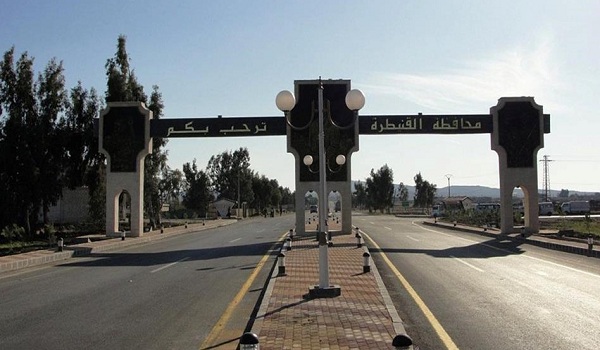The governorate of al Quneitra or Golan, south west of Syria, is 1860 square km, with al Quneitra city, as the provincial capital. The name Quneitra was derived from the Arabic word Qantara which means an arch bridge, because Quneitra is on the cross roads between Syria, Palestine, Jordan, and Lebanon. The governorate has a unique diverse terrain starting by Lake Tiberias in the south 212 m below sea level which climbs up to the peak of Mt. Hermon, 2814 m above sea level in the north. This position and geography made the governorate of a special importance, geographically, historically and environmentally.
 Therefore it was inhabited by man from the stone age -evidence was found in several sites in the governorate mainly in Jisr Banat Yakoub (Jacob’s Daughters Bridge) and Tall Akkash. The governorate was occupied by Israel in 1967 -then Israel occupied parts of the governorate and displaced its inhabitants.
Therefore it was inhabited by man from the stone age -evidence was found in several sites in the governorate mainly in Jisr Banat Yakoub (Jacob’s Daughters Bridge) and Tall Akkash. The governorate was occupied by Israel in 1967 -then Israel occupied parts of the governorate and displaced its inhabitants.
Later Syria, after the October 1973 war, was able to liberate the city of Quneitra . Before the Israelis left the city they looted most of its ruins and historical artifacts and deliberately destroyed its house and infrastructure to change it into piles of rubble,leaving it a witness to their cruelty and barbaric behavior .
Tourist sites in al Quneitra:
The Museum: in the center of the liberated city, originally built during the late period of the Ottoman era. It includes two porticos .Built of basalt stones with an area of 480 square meter. It has artifacts of the civilizations that lived in the governorate:
* Civilization of the stone age 4000 BC.
* Civilizations of ancient orient(old, median and modern bronze age).
* Classical civilizations(Hellenistic, Roman and Byzantine).
* Islamic civilization.
All artifacts are displayed in show cases with bilingual explanatory captions.
 Khan Arnaba: 2500 square meter area with a court yard of 900 square meter surrounded by domed porticos .The khan was originally a caravan station near which there is a mosque now under restoration .
Khan Arnaba: 2500 square meter area with a court yard of 900 square meter surrounded by domed porticos .The khan was originally a caravan station near which there is a mosque now under restoration .
Mosque of Daghistan:
Built from the donations of the inhabitants in 1925. It is 1000 square meter, built of basalt stones as a theological school.
The Orthodox Church:
Built in 1930 by archbishop Ma’alouf . It is 175 squre meter with a garden of 1500 square meter. The Zionists destroyed parts of it and looted all its icons and treasures. Pope John Paul II visited the church in his visit to Syria in 2001 where he gave a sermon and planted an olive tree as a call for making peace.
Mausoleum of Jbawi:
Built in the early Ottoman era 3 km south of Kahn Aranaba. A holy Moslem sheikh, Sa’adeddin Jbawi and his son are buried there.
Tall Nabei al Sakhr:
 Discovered in 1995, belongs to the Median Bronze age (1800-1600 BC). The tall (hill) has underground tunnels and tombs. One of the tombs is 14 m underground. 160 pottery items were found inside.
Discovered in 1995, belongs to the Median Bronze age (1800-1600 BC). The tall (hill) has underground tunnels and tombs. One of the tombs is 14 m underground. 160 pottery items were found inside.
Natural reserves of Bir Ajam & Rwehineh:
3 km south east of Quneitra city, of 40 Acres with forests covering all the slopes around the two villages. In the part still occupied of the Golan there is Lake Massa’ada, al Himmeh sulfuric water sources and other natural sites.
Syria is working hard to regain the occupied parts of the Golan, to integrate them with their mother country and to return their displaced citizens back home.
Haifaa Mafalani

